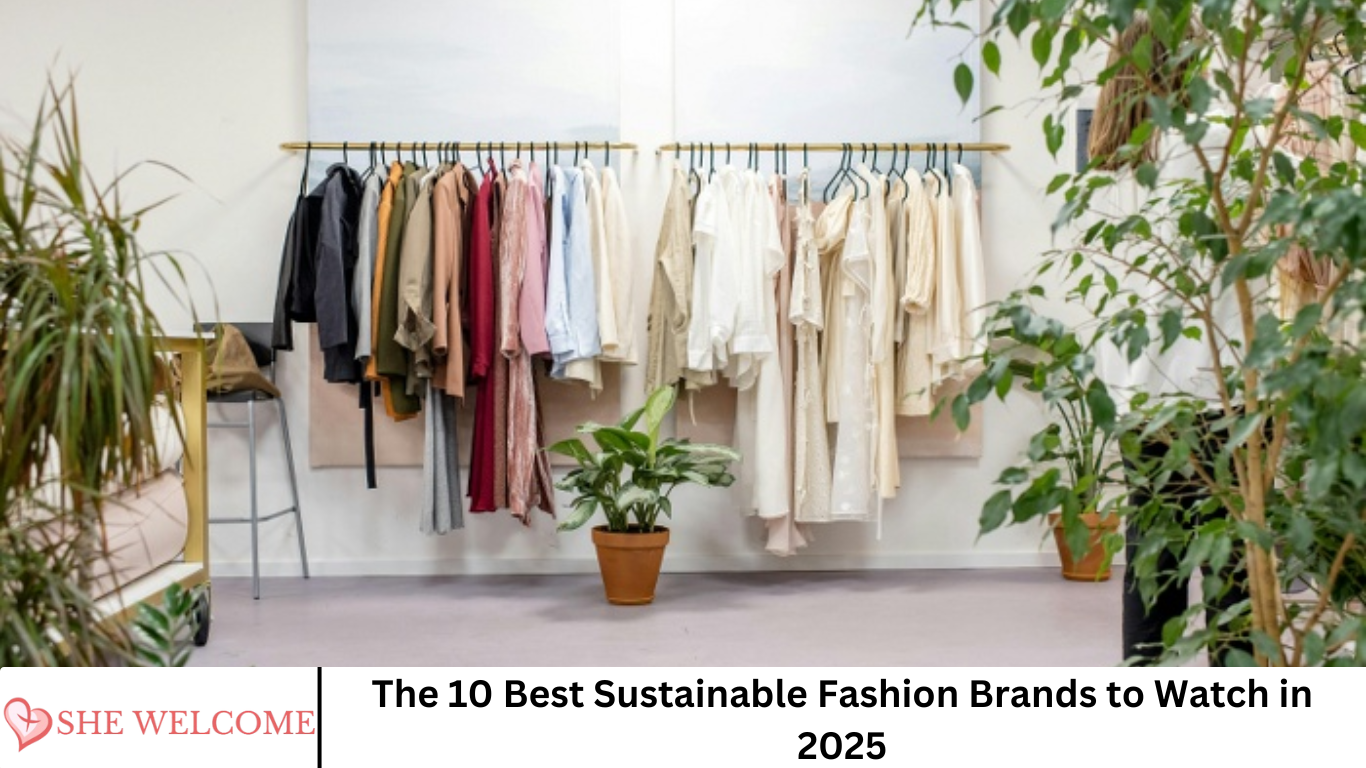In recent years, eco-friendly and sustainable fashion has shifted from niche to mainstream. As consumers become more informed about the climate crisis and the social costs of fast fashion, the demand for sustainable alternatives has surged.
Today’s shoppers aren’t just looking for style—they’re looking for substance. They want clothing that aligns with their values: ethically made, environmentally responsible, and low-impact from start to finish.
More Read: Feeding the Mind: How Nutrition Shapes Mental Health and Well-Being
1. Stella McCartney
- Luxury meets ethics: steering clear of leather, fur, and feathers since 2001.
- Pioneering materials: Mylo™ mycelium leather, seaweed‑based Kelsun, biodegradable sequins.
- Corporate milestones: B‑Corp certified, aggressive lower‑impact sourcing goals for 2025.
2. PANGAIA
- Science‑based eco‑style: plant‑based denim, eucalyptus fiber, grape‑waste leather.
- Gen‑Z favorite: vibrant graphics, athleisure, carbon‑negative R&D.
- Collaborations: Timberland, Headspace, Polestar, showcasing scale and innovation.
3. Marine Serre
- Upcycling avant‑garde: 50 %+ of her line from deadstock, tablecloths, vintage lace.
- Eco‑futurist aesthetic, moon‑print signature; worn by global stars like Beyoncé.
- Supply‑chain ethics: women‑led, in‑house sourcing, and handcrafted creativity.
4. MUD Jeans
- Denim circularity pioneer: lease‑a‑jeans, take‑back and recycle system.
- 40 % post‑consumer denim, water‑saving dye and rinse methods, annual lifecycle reporting.
- Dutch B‑Corp model of reusable, renewable denim infrastructure.
5. Rothy’s
- Zero‑waste footwear & accessories: 3‑D knit from recycled bottles, factory LEED certified.
- Carbon‑neutral production, in‑store take‑back program.
- Classic, machine‑washable styles with strong DTC growth.
6. Ganni
- Scandi-chic with ethics: grape‑skin vegan leather, Infinited Fiber recycling.
- Greenwashing out, transparency in: supply‑chain visibility via tech.
- 2023 milestone: pledge to phase out virgin leather.
7. Gabriela Hearst
- Luxury, redefined: runway shows with borrowed props, compostable packaging.
- Carbon‑neutral catwalk, no‑plastic production ethos.
- High‑end craftsmanship that refuses excess waste.
8. Allbirds (add if you like; similar profile)
- Renewable materials, carbon‑neutral footprint, widely lauded for sneakers.
- Include Allbirds for wider reach and SEO.
9. Patagonia
- Outdoor sustainability pioneer: recycled fishing‑net fleece, Worn Wear circularity.
- Industry advocacy, transparency, and eco‑activism.
10. Stella‑adjacent or Rising Brand Spotlight
- Choose from Nina McCartney, Outerknown, Tentree, or Gym + Coffee—all highlighted in recent news as growth leaders.
What Makes These 10 Stand Out
- Material innovation
- Circular economy models
- Transparency and certification (B‑Corp, SBTi, lifecycle tracking)
- Scalability and visibility: celebrity endorsements (Taylor Swift with VRAI jewelry, global rollouts.
Buying Smart in 2025: Consumer Tips
- Beyond “eco” labels: look for lifecycle transparency, take‑back programs, and third‑party certifications.
- Circular wardrobe approach: rent, resell, repair.
- Support emerging eco‑luxury & DTC: invest in quality, not quantity.
- Verify brand claims: traceability, public ESG reports, brand partnerships.
Frequently Asked Question
What makes a fashion brand “sustainable” in 2025?
A sustainable fashion brand in 2025 uses eco-friendly materials (like organic cotton, recycled fibers, or bio-based fabrics), minimizes water and energy consumption, ensures fair labor practices, and offers transparency about sourcing and production. Many also adopt circular practices, such as recycling programs or repair services.
Why is sustainable fashion important right now?
The fashion industry is one of the world’s biggest polluters, responsible for up to 10% of global carbon emissions and massive water waste. Sustainable fashion reduces environmental damage, supports ethical labor, and empowers consumers to make responsible choices without sacrificing style.
Are sustainable fashion brands more expensive?
While some sustainable brands carry a higher price tag due to ethical production and quality materials, many offer long-term value. These items often last longer, are repairable, and don’t contribute to the hidden costs of fast fashion like environmental harm or worker exploitation.
Which is the most affordable sustainable fashion brand on the list?
Brands like PANGAIA, MUD Jeans, and Rothy’s offer accessible pricing within the sustainable fashion space. They provide transparency, durability, and innovation at competitive prices, especially compared to high-end luxury labels.
Can I trust brands that claim to be eco-friendly?
Look for certifications like B-Corp, Fair Trade, GOTS (Global Organic Textile Standard), and OEKO-TEX. Brands featured in this list—like Patagonia, Stella McCartney, and Ganni—are known for their transparency and third-party verification of sustainability claims.
How can I shop more sustainably in 2025 beyond these brands?
- Choose quality over quantity
- Shop secondhand or vintage
- Repair instead of replace
- Support local or slow fashion designers
- Use resale platforms like ThredUp, Poshmark, or The RealReal
What trends are shaping sustainable fashion in 2025?
Key trends include:
- Biomaterials (like mushroom leather and seaweed fiber)
- AI-driven supply chains for waste reduction
- Product traceability tools (QR codes showing sourcing)
- Take-back & resale programs by major brands
- Carbon-neutral fashion lines and transparency in emissions reporting
Conclusion
As the climate crisis accelerates and consumer awareness deepens, sustainable fashion is no longer a trend—it’s a necessity. The brands featured in this list are not only redefining what it means to be stylish, but also what it means to be responsible. From pioneering eco-materials to circular business models and radical transparency, these fashion leaders are showing that true innovation begins with values. In 2025, fashion is about more than how we look—it’s about how our choices impact the planet and people behind the scenes. By supporting sustainable brands, consumers have the power to shift the industry away from fast fashion and toward a cleaner, fairer, and more ethical future.


